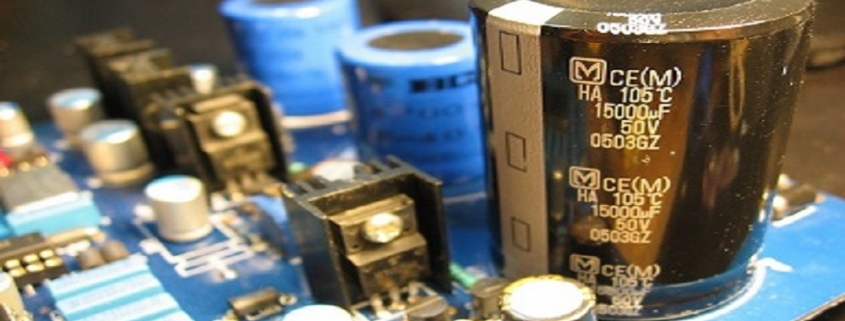The Growing Demand for the Supercapacitor Market Across Multiple Sectors
The supercapacitor market is projected to grow at a CAGR of 20.69% during the forecast period to reach a valuation of US$3,010.052 million by 2027 from US$807.096 million in 2020.
Supercapacitors, double-layered capacitors, or ultracapacitors, are electronic devices with comparatively higher capacitance values and lower voltage ranges. These energy storage devices have the capability of bridging the gap between traditional capacitors and batteries. Furthermore, their ability to store a higher amount of energy than typical capacitors and produce more power than standard batteries, along with long-term stability and high cyclability, makes them highly appealing as energy storage devices. Due to such attributes, they are found in multiple applications, either as autonomous energy sources or in combination with other energy storage devices such as batteries. In particular, supercapacitors are most commonly found in applications with fluctuating loads, like, portable media players, GPS, PDAs, and laptops. They are also used in microgrids to store energy in reverse conditions while also quickly injecting power whenever demand is high, and production is low in these grids. Additionally, they also found use in energy harvesting solutions, aerospace, automotive segments, and industrial segments. The growth in demand for these supercapacitors in all these industries is expected to propel the growth of the market.
The increase in electric automobile production to increase the demand for supercapacitors in the projected period
One of the most anticipated and significant innovations of today is cost-effective, long-range, efficient electric vehicles. Power storage is considered to be the most crucial component of an electric vehicle, with tremendous potential to enable electric vehicles to outdo internal combustion engine vehicles. Supercapacitors are mainly used to deal with the storage issues of traditional batteries. The high-power density of a supercapacitor enables it to quickly charge or discharge a huge amount of power without compromising on its potential to sequester energy. This makes supercapacitors find an advantage in scenarios where a huge amount of power must be captured or supplied in a short period, like, acceleration and regenerative braking, where these supercapacitors capture the kinetic energy from deceleration that is usually dissipated as heat. Consequently, supercapacitors are mainly used in hybrid vehicles like the Toyota FCHV and Lamborghini Sian. Many other automobile manufacturers are also employing supercapacitors in their offerings, due to these appealing features. For instance, in India, Omega Selki Pvt Ltd partnered with Log 9 materials to launch a Rage+ Rapid EV in November 2021. With Log 9’s expertise in supercapacitor technology, the battery’s performance is superior to that of typical EV batteries. With this launch, the former aimed at revolutionizing the Indian EV market. Further, according to Volkswagen’s forecast in its 2021 Annual Report, the global market share of EVs is expected to reach 50% by 2030, which is likely to add to growth in this segment.
Environmental Sustainability
The rising awareness of environmental sustainability, as well as multiple initiatives taken by governments and businesses, has resulted in a rise in the number of renewable projects. For instance, in March 2022, the state-run PGCIL (Power Grid Corporation of India) announced the approval of 5 power-grid projects worth INR 821 crores to strengthen the transmission system across several Indian states. While in November 2021, China’s Southern Power Grid, the country’s major power grid, declared its intention to invest a value of US$ 105 billion in grid network construction in the period between 2021-2025 to accelerate renewable power consumption and power stability. Further, in May 2022, the United States Department of Energy launched funds worth US$ 2.5 billion to expand and modernize America’s power grid. This investment is said to be along similar lines with the US government’s quest to run the national grid on 100% clean and renewable electricity by 2035. High power energy storage abilities and swift responses are providing grid operators with an efficient way to overcome frequency, voltage, as well as power quality concerns. Hence, the increase in renewable generation projects in multiple countries is expected to drive market growth.
COVID-19 Insights
The COVID-19 pandemic negatively impacted the Supercapacitor market. The mandated lockdowns, social distancing, and the subsequent closure of production sites across multiple countries due to a spike in active cases negatively affected the productivity of multiple firms. The shortage of manpower, strict border controls, port closures, as well as reduced air transport availability were some of the factors that affected the market, causing it to slow down. For instance, Volkswagen observed a dip in its revenue by 11.8% in 2020. As a result, all these factors led to a recession in the economy across the globe. Owing to the limited funds amidst the crisis, many ongoing projects were paused indefinitely, thus decreasing the market growth. According to the IEA (International Energy Association), the global renewable energy capacity additions fell by 11% in the first half of 2020 as compared to the previous year. However, post the pandemic, with the easing of restrictions and the resuming of production facilities, the market showed positive growth due to a growth in demand for semiconductors across multiple industries to meet the need for the rapid adoption of automation.



